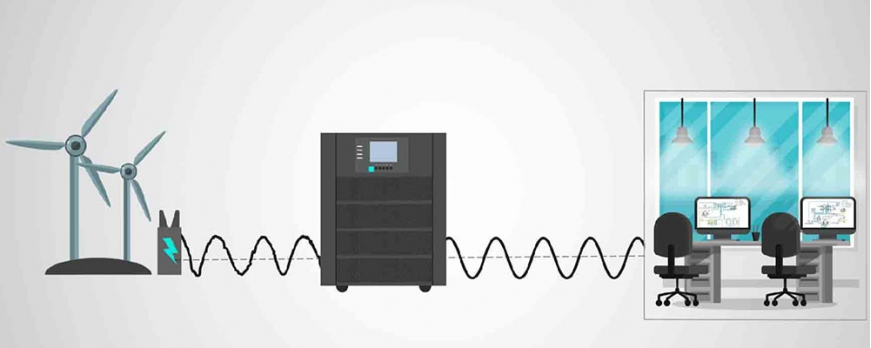Line-interactive UPS Vs Online UPS

Sine Wave Output
Without boring you with too much detail, there are three types of wave currents: square, simulated sine, and true sine. While each wave alternates between positive and negative to create a current, the three are vastly different.
Square waves are typically produced by lower end equipment and, despite cost benefits, may put strain on the connected equipment that can lead to operation problems.
The next step up is a compromise between power quality and cost with a simulated sine wave. While this wave is still less than ideal, the shape of the wave more closely resembles a pure sine wave and therefore, offers a better quality current.
ensure the best quality power is delivered to equipment.
Voltage Regulation
A line interactive UPS has two options when it comes to dealing with power, switch to battery power or buck/bump the power level to normal with an automatic voltage regulator (AVR). An AVR acts as a sort of gatekeeper and each unit has a range that covers slightly above and slightly below normal which is 110V. For instance, a range can be between 100v and 120v. So here are the options for the current: 1.) If the current coming from the wall is normal then it goes right through. 2.) If the current is abnormal but still within a certain range, the voltage regulator will either boost the current up to normal or bring it down to normal. 3.) However, if the current is abnormal and outside of the range then the UPS will switch to battery power just like the standby UPS.
Double-Conversion Inversion
Instead of employing a battery to prevent downtime, on-line UPSs only have one option to protect against power problems and that’s conversion. As complicated as ‘double-conversion inversion’ sounds, it’s a relatively simple concept. Firstly, an AC current is one that can run long distance but is not as high quality as DC power. Conversely, DC power is very high quality, but only for short distances, like the distance through a UPS. Thus, every current enters an online UPS as AC then is converted into DC, whether it is normal or not, and exits the unit as AC again. Essentially, an online UPS cleans up any current, ensuring the purest most high-quality current is entering the equipment attached to it.
How to Decide
While an online UPS is the top of the line protection available, it can be costly. These units are best suited for sensitive mission-critical equipment that handles very sizable amounts of power. Many people are looking for great protection that won’t hurt the budget too much, which is where the line interactive units come into play. Line interactive UPSs are a great balance between protection and quality.
